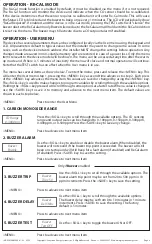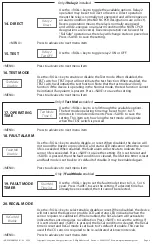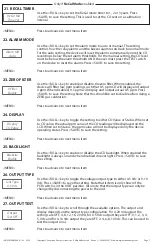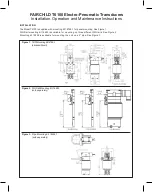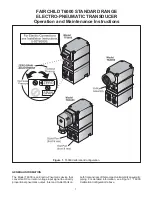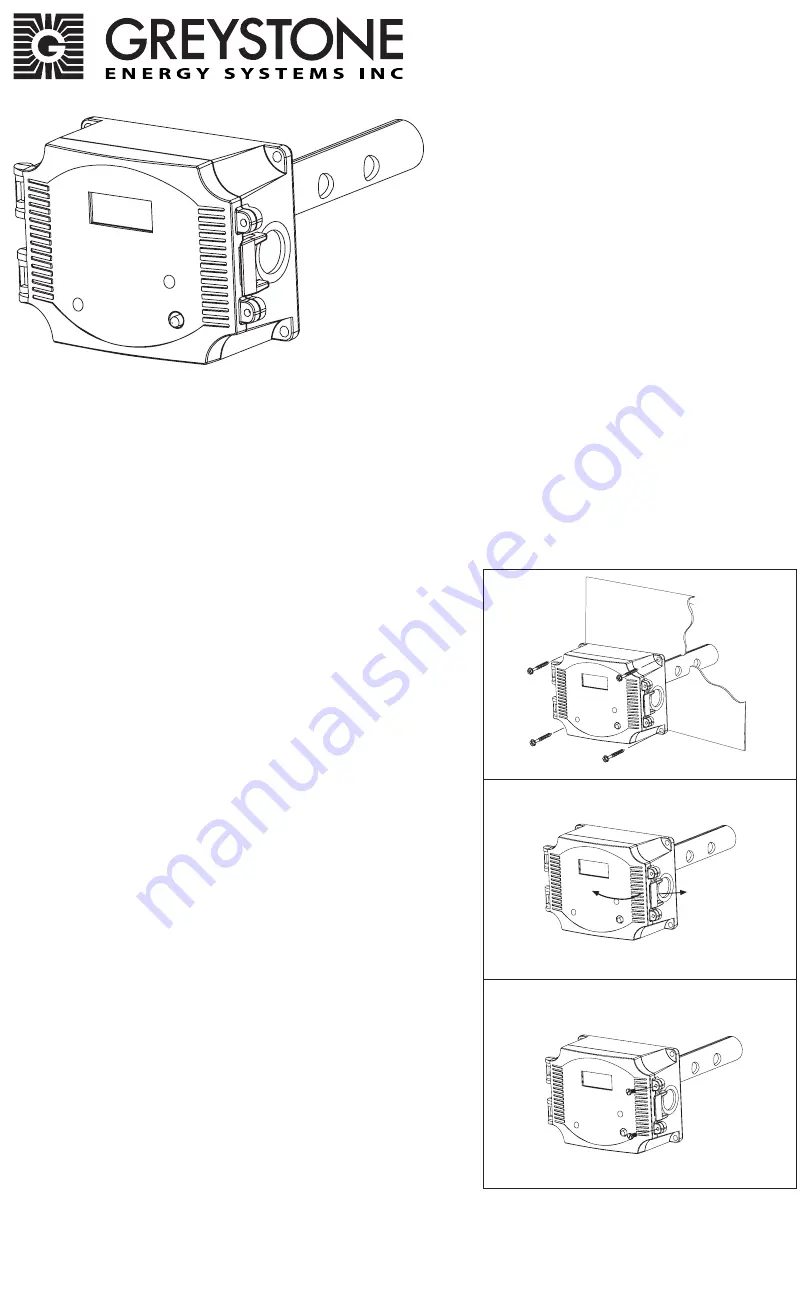
Page 1
INTRODUCTION
The CO Transmitter uses an electrochemical
sensor to monitor the carbon monoxide level
and outputs a field-selectable 4-20 mA or
voltage signal. The voltage signal may also be set
to 0-5 or 0-10 Vdc. The sensing range and output
may be scaled to either 100, 150, 300, 400 or 500
ppm via the on-board menu. A front panel LCD
is standard to ensure easy setup and operation.
Other standard features include a back light
for the LCD, a front panel test switch, status
indication and an alarm buzzer. The test function
may also be controlled remotely with a digital
input signal. A three-key menu is implemented to allow local configuration of all device parameters.
BEFORE INSTALLATION
Read these instructions carefully before installing and commissioning the CO Transmitter. Failure to follow
these instructions may result in product damage. Do not use in an explosive or hazardous environment,
with combustible or flammable gases, as a safety or emergency stop device or in any other application
where failure of the product could result in personal injury.
Take electrostatic discharge precautions
during installation and do not exceed the device ratings.
MOUNTING
The CO duct type sensor installs on the outside of a return
air duct with the sampling tube inserted into the duct. Use
the included foam plug to prevent air from entering the
enclosure through the conduit and causing an incorrect
reading. Mount the sensor in an easily accessible location
in a straight section of duct at least five feet from corners
and other items that may cause disturbances in the air flow.
Avoid areas with vibrations or rapid temperature changes.
The duct CO detector principal of operation is based on the
Venturi effect of the probe that extends into the HVAC duct.
Air flowing through the duct is forced into the vent holes on
one side of the probe, into the enclosure, over the CO sensor
and then is drawn back out of the enclosure via the probe
vent holes on the opposite side.
Drill or punch a 1-1/8” or 1-1/4” hole in the duct at the
preferred location and insert the probe into the hole to mark
the enclosure mounting holes. Remove the unit and drill the
four mounting holes. Clean all drilled holes of debris before
mounting the device. Mount the enclosure to the duct with
four sheet metal screws such that the duct air flow is parallel
with the vent holes in the probe (i.e.: air flows directly into
the probe holes). To prevent air leaks, ensure the gasket is
compressed around the probe between the device enclosure
and the air duct.
Open the cover by releasing the latch and connect the device
according to the wiring instructions. After wiring and setup
are complete, close and latch the cover. Secure it with two
self-tapping screws in the holes provided.
HARDWARE SETUP
The only hardware setup required is to select the analog
output type with the PCB switch labeled VOLT and mA. Slide
the switch to the correct position for the required output
signal type, either 4-20 mA or 0-5/10 Vdc.
Figure 1
Figure 3
Figure 2
IN-GE-CMD5B5XXX-01-02 03/19
Copyright © Greystone Energy Systems, Inc. All Rights Reserved Phone: +1 506 853 3057 Web: www.greystoneenergy.com
Carbon Monoxide Transmitter
CMD5B5 Series - Installation Instructions




